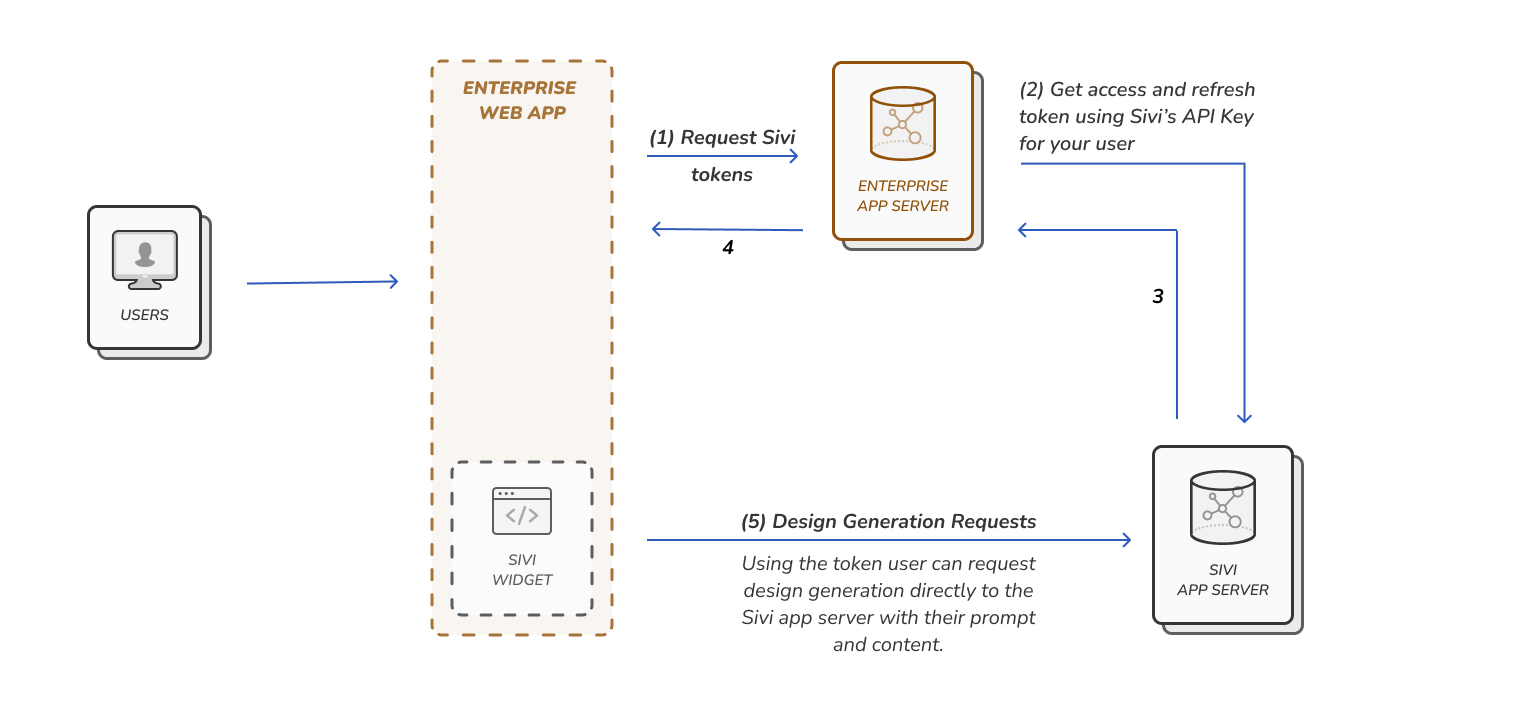Enterprise Overview
Data Flow

The diagram illustrates the authentication and design generation flow for the Sivi UI SDK in an enterprise integration scenario:
-
User to Enterprise Web App: Users interact with your enterprise web application where the Sivi Widget is embedded.
-
Authentication Flow (Steps 1-4):
- (1) Your enterprise web app requests Sivi tokens for authentication
- (2) Your enterprise app server uses Sivi's API Key to request tokens for your users
- (3) Sivi App Server validates and processes the authentication request
- (4) Authentication tokens are returned to your web application
- (5) Your web application provides them to the Sivi Widget and Widget takes care of refresh
-
Design Generation (Step 5):
- Using the authenticated token, users can interact with the Sivi Widget
- The widget enables users to send design generation requests directly to the Sivi App Server
- Users can submit their prompts and content through the widget interface
This architecture ensures secure, seamless integration while maintaining separation between your user management and Sivi's design services. The machine-to-machine authentication eliminates the need for users to create separate Sivi accounts.
Security Considerations
- Token Expiry: The access token will expire after a short period to prevent reuse.
- Secure Storage: The Sivi API Key should be stored securely in the [Enterprise] App Server and never exposed to clients.
- HTTPS Communication: All requests must be encrypted via HTTPS to protect data integrity.
- User Isolation: Each design request is tied to an abstract user ID, preventing unauthorized access to other users data.